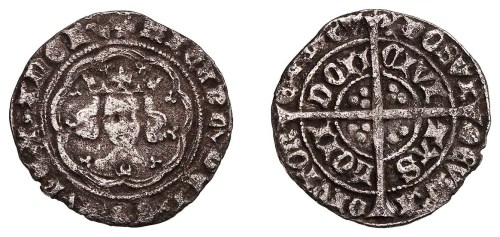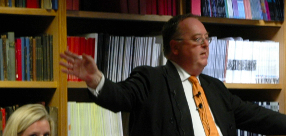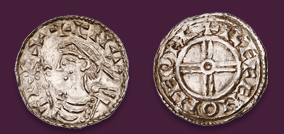
Auction: 11023 - Ancient, English & Foreign Coins and Commemorative Medals
Lot: 79
Richard II, ´crescent on breast´ Halfgroat, 2.04g, London, type IV, m.m. cross pattée, new style bust with bushy hair, crescent on breast, crown 2, French title omitted, ricard dei gra rex angli, wedge shaped contraction mark after ricard and angli, letter styles R1 and I2, rev. posvi/devm a/divtor/e, double saltire stop after devm, civi/tas/london, unbarred ns, no contraction marks (N.-; S.-; Potter -; cf. Greenhalgh Richard II 3/ Henry IV 1), full flan, surface corrosion, about fine / fine, indisputably with a crescent on the obverse, the only known example and a great rarity, previously unrecorded, extremely rare Estimate £ 1,500-2,000 provenance Found, at Ford, Northumberland, February 2011 - recorded with UKDFD ref 31762. Until this coin came to light the only coins of Richard II known with the crescent on breast feature were the extremely rare type IV Groats. The existence of Halfgroats with a crescent on the breast was for long suspected with a coin formerly in the Walters collection, sold in 1913 and later acquired by the British Museum, cited as an example for many years. This attribution was firmly rejected by Marion Archibald in 1965 who showed the crescent on the king´s breast was imagined and actually the result of carelessly punched cusp ends on the die. The crescent on this new coin is absolutely clear and certainly not the result of sloppy die cutting, making it possible to confirm that ´crescent on breast´ Halfgroats were indeed struck. Lord Stewartby associates this reverse style with the unbarred n, known for a single die, with issues of Henry IV. He noted, though, that Halfgroat mules of Richard II and Henry IV all pair earlier reverses with later obverses. This new coin clearly pairs a Richard II. i.e. earlier obverse with what, on traditional interpretation, is a later i.e. Henry IV reverse - a combination most unlikely according to Lord Stewartby. He also noted that when the unbarred n reverse die occurs on Henry IV Halfgroats it is always worn and that consequently it may have been struck from a reused Richard II type IV reverse die. This new coin, although with surface corrosion, does not seem to have been struck from a worn die and this appears to support Lord Stewartby´s observation that this reverse die is indeed one of Richard II later reused under Henry IV. In conclusion the reverse of this coin is not a Henry IV type but is in fact the reverse for a ´crescent on breast´ Richard II type IV Halfgroat. This would be entirely consistent with the Richard II type IV Groat issue and proves that the issue of ´crescent on breast´ Groats was accompanied by Halfgroats as well. This new coin firmly belongs to the coinage of Richard II and provides for a new addition to the English Medieval coinage.
Sold for
£1,000




